The whitetip reef shark, which is known by the scientific name of Triaenodon obesus, is a species of requiem shark, of the Carcharhinidae family.
It is a small shark, which mostly does not exceed 1.6 meters in length.
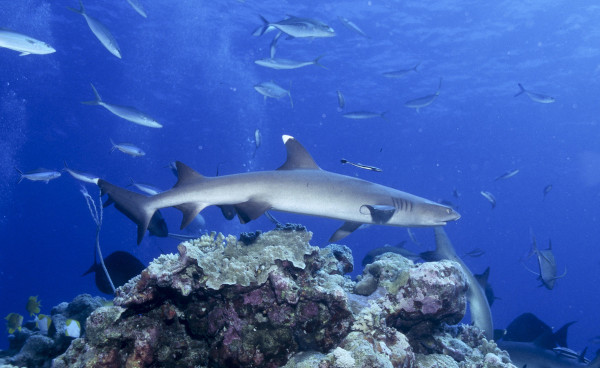
It can be easily identified by its slender body and short, broad head. He is one of the most common sharks on coral reefs.
One of his peculiarity is staying in one area of the reef for months or years, and of continually returning to the same refuge.
They have declared the whitetip reef shark vulnerable, as their numbers are decreasing due to overfishing, in addition to the fact that their slow reproduction and their preference for a specific habitat are not favorable to them.
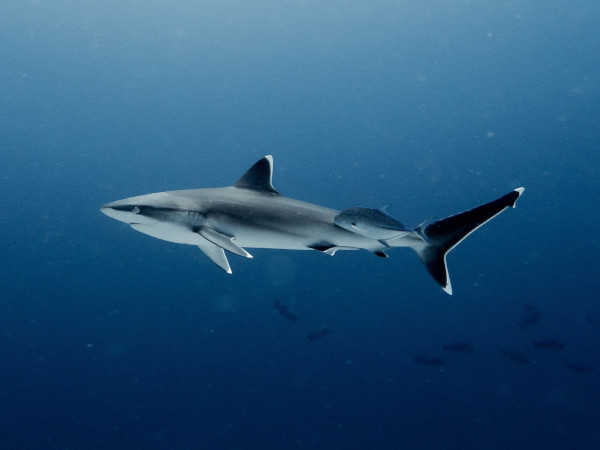
What are white tip sharks reef like?
Whitetip reef sharks are not the largest species of sharks.
They can reach a maximum of 2.10 m. approximately and weigh up to 18.3 kg. they have a flattened snout, with long appendages in front of the nostrils.
The small, oval eyes and teeth have a narrow, smooth-edged cusp in the center.
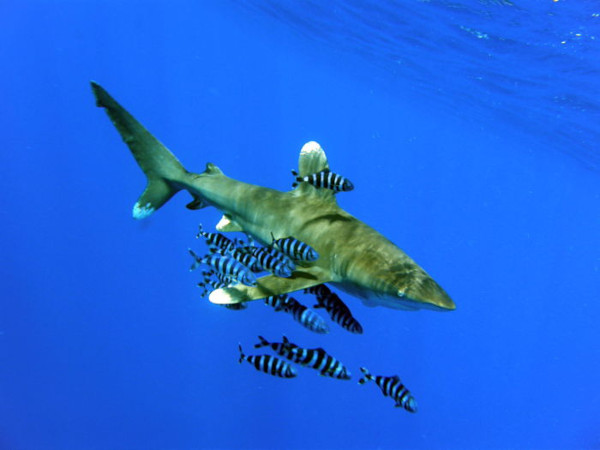
Are Whitefin or whitetip Sharks Dangerous?
When we think of sharks of any species, we ask ourselves this question almost obligatorily.
The answer to this question is no. There is no reason to be afraid of whitefin sharks.
They rarely attack humans, although they sometimes come very close to swimmers to investigate, there have been no reports of humans attacked by sharks on Caño Island in the last 50 years.
The probability of being attacked by sharks is really negligible.
We are more likely to be hit by a car than being attacked by a shark.
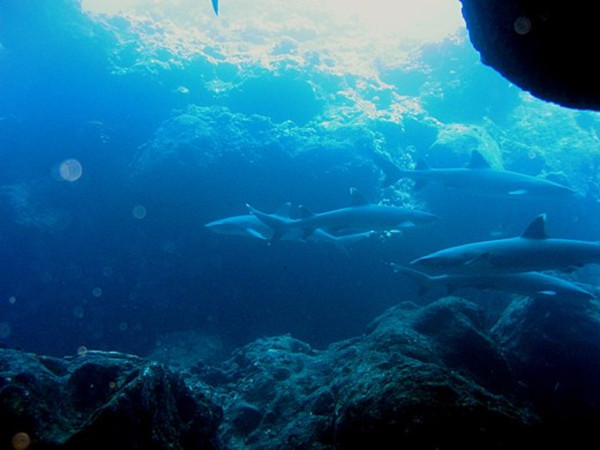
What does the whitetip shark eat?
During the day they can spend a lot of time resting, because unlike other sharks they do not have to constantly swim to breathe. This species has the ability to pump water over its gills in order to remain immobile on the bottom.
It is at night when whitetip sharks hunt, usually in groups. although each shark hunts individually and in competition with others in its group. Whitetip reef sharks do not tend to become agitated or frantic when feeding in groups.
The characteristics of their elongated bodies make it easier for them to extract the fish hidden in holes or crevices, and although their body is favorable for obtaining prey inaccessible to other species of reef shark, they are somewhat clumsy to catch food floating in open water.
It mainly feeds on fish, such as eel, parrotfish, triggerfish, as well as octopuses, lobsters, and crabs.
This species excellently captures smells, sounds and because of their prey, they have a more developed sense of sight to capture movements than to distinguish details.
Moving from their nocturnal habits, these sharks also hunt during the day if they find easy prey.
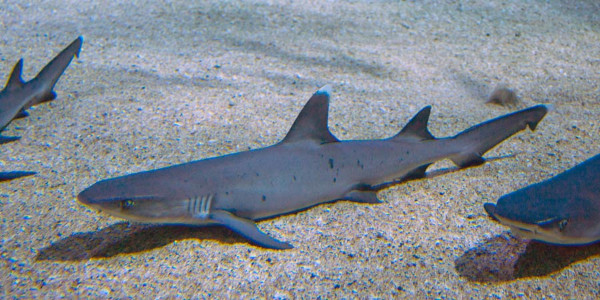
How do whitetip sharks reproduce?
This species is viviparous and developing embryos are sustained by a placental connection to their mother. That is, once the embryos have consumed the yolk, the yolk envelope forms a placental connection with the mother, through which it is they feed until the end of gestation.
Females give birth to one to six young every two years, after a gestation period of 10 to 13 months.
Females have only one ovary and two uteri. The reproductive cycle is biannual.
What other species of shark inhabit Caño Island?
The most commonly seen on Caño Island are blacktip reef sharks and whitetip reef sharks.
There are also the largest species such as whale sharks, which can even measure up to 16 meters long, and who feed on the famous plankton.
Other species that can be seen are tiger sharks, nurse sharks, bull sharks and hammerhead sharks.
How can I avoid risks of shark attacks?
In general, and as we have already mentioned, on Caño Island and elsewhere, shark attacks on human beings are very rare, including the whitetip reef shark.
In any case, we want to give you some tips so that you always take the necessary good precaution, and that you always have good information for your peace of mind.
- One of the tips is that you try not to swim alone
- Always try to avoid murky waters
- Refrain from splashing too much when you observe strange behavior in a surrounding shark
- Try not to swim at night
- Be careful if you see animals such as turtles or other fish suddenly flee
- Avoid swimming if you have any bleeding wounds
- Always check with the local guard before diving
5 Animals you will love to see at Isla del Caño
Is it possible to dive with white tip sharks on Caño Island?
Caño Island is a protected area and can only be accessed with a specialized guide of the place.
This favors the existence of an infinity of underwater species like nowhere else, being also the natural habitat of the shy white-fin shark.
The perfect visibility of the surrounding waters makes the diving and snorkeling experience something impossible to forget.
With Costa Rica dive and Surf you can sign up for a diving or snorkeling tour in Caño Island, and experience the adventurous thrill of diving and seeing sharks of all species that inhabit this heavenly place.
Can you fish for white fin sharks on Caño Island?
There was a declaration of Isla del Caño as a protected area back in 1978
For this reason, and in order to conserve the biodiversity of the place, there is not commercial or sport fishing in the area.
So you can not fish whitetip reef shark or any other shark there.
However, there are a number of recreational activities that are possible in Isla del Caño, such as snorkeling and diving.
Consult our tours and packages and schedule with us for a visit to this heavenly place.
